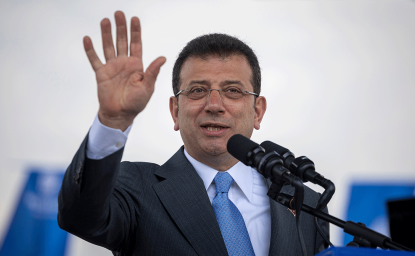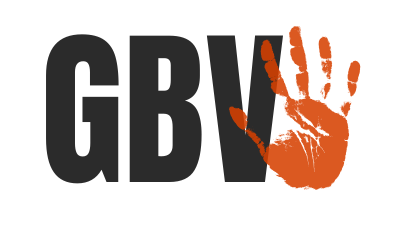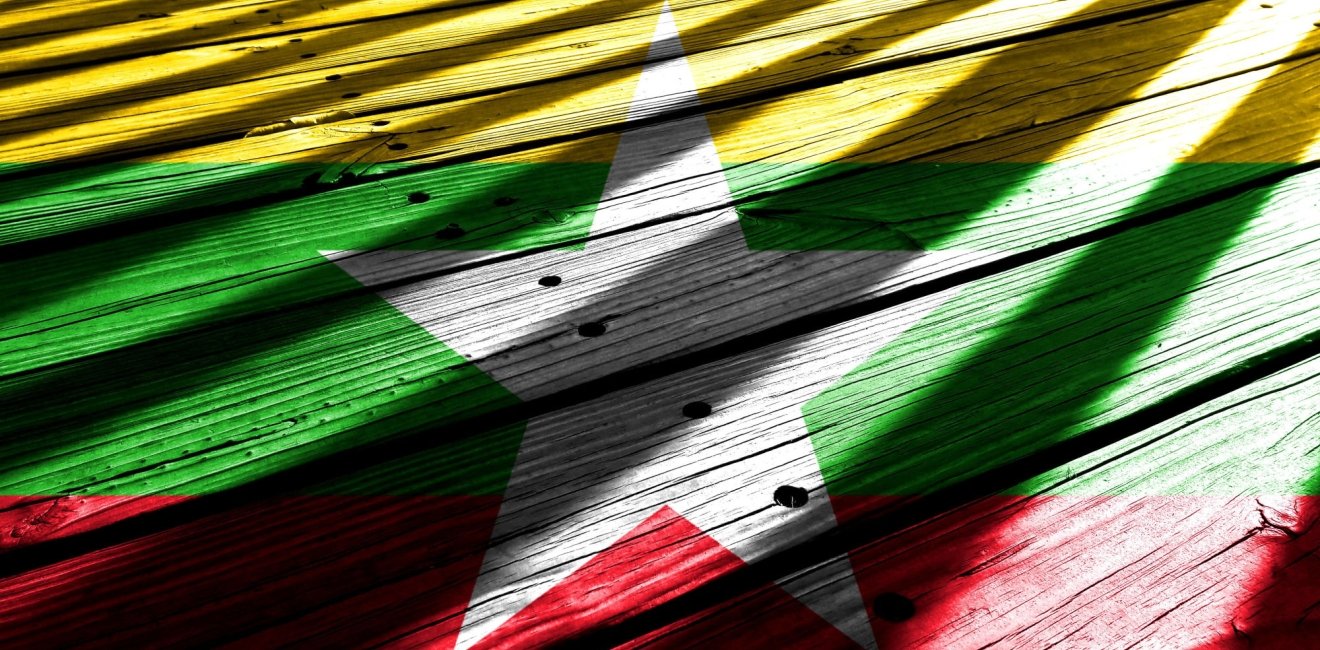Following the second anniversary of the February 2021 military coup d’état in Myanmar, the war enters a critical phase. The pro-democracy National Unity Government and both allied and “armed neutral” ethnic armed organizations signaled escalated military campaigns in 2023 in their New Years’ statements. Despite unresolved problems posed by vulnerability to air power and artillery, limited military equipment, command and control issues, and a lack of unity grounded in distrust between the Bamar-dominated National Unity Government and the country’s ethnic armed organizations, the resistance movement has gained considerable momentum. Perhaps half of the country can be described as “contested,” and the military continues to suffer severe casualties. Internationally, the United States passed the National Defense Authorization Act 2023, promising significant aid.
But, a strategic stalemate is increasingly evident on the battlefield. Both sides are maneuvering to shift the balance of power. Despite conventional wisdom that longevity favors insurgencies, time is not necessarily on the resistance’s side. Dragging out the conflict risks exhaustion, and fragile resistance alliances may be stretched to the breaking point. Anti-junta forces face the unenviable situation of a “closing window” problem.
Analysts have drawn parallels in Myanmar’s renewed civil war to Mao Zedong’s theory of insurgency, and, while Mao remains analytically relevant, the Myanmar resistance does not have time on its side under current conditions. As an actor with an offensive political objective aligned with defensively oriented ethnic armed groups facing a junta holding the country’s cities and strategic points, the National Unity Government’s best hope is to foster greater military cooperation tactically and strategically with the ethnic armed groups and build up a “revolutionary base area” to solidify its popular support and alliances, its centers of gravity. Only then will the pro-democracy resistance have held open its window of opportunity long enough to begin unifying around a political objective and prepare for a strategic offensive when conditions are more favorable.
The Closing Window Problem
While Mao, echoing Clausewitz, argued that prolonged conflict can allow the weaker party to reverse the imbalance in conventional power, this may not hold in Myanmar’s case. Mao’s theory may remain relevant and analytically useful, but in Myanmar the military historically prevails against protracted insurgencies in the heartland, its center of power, even if they do not fully annihilate their opponents.
Fundamentally, the junta has a defensive political objective, and the longer it holds on, the more effectively it can make the case that it is the government of Myanmar. Per a RAND study’s conclusions, “insurgents do not necessarily win as long as they manage to ‘hold out,’” particularly if they are unable to sustain popular support. Moreover, the Myanmar government, mostly military-run since independence, stands out as an outlier in a separate RAND study of insurgencies due to a near-continuous series of insurgencies failing to topple it since 1948. So long as the junta can hold the cities and central state apparatus, it is likely capable of outlasting the revolution, even in the face of an isolated and enfeebled economy. Moreover, the junta’s primary centers of gravity are a tight grip on urban centers, strategic routes, and the border areas, as well as international support in the form of aircraft and other arms and financing and investment, none of which the National Unity Government and its allies can currently target effectively.
But, the junta is not content to simply wait out the resistance. It pursues a “divide-and-conquer” strategy targeting the resistance’s centers of gravity: its popular support and its alliances with several powerful ethnic armed organizations. Sever these connections, as the junta hopes to do, and the pro-democracy resistance will be crippled. This is the essence of the “closing window” problem facing the National Unity Government and the pro-democracy movement in 2023.
There is a risk that the resistance, without a base area, may simply run out of steam if the sacrifices demanded of the people continue to drag on indefinitely.
Fundamentally, the National Unity Government is vulnerable to the “closing window” problem, because it continues to act as what Mao labels a “roving rebel” without a base area to build up from. While the National Unity Government cooperates with its allied ethnic armed groups, there are limits to this cooperation. Much of the territory and troops performing best against the junta, such as the Karen National Liberation Army and Kachin Independence Army, are under the control of these ethnic armed groups (including local People’s Defense Forces), not the National Unity Government. In the sprawling Anyar region, a hotbed of resistance, People’s Defense Forces have not yet consolidated a base area. Moreover, while the ethnic armed organizations have long held base areas—and continue to deepen and expand their governance of them—the National Unity Government lacks its own, rendering it fundamentally insecure and dependent upon them. So long as the National Unity Government only contests territory but has not been able to firmly control it, large portions of the population predominantly live and work within the junta’s political and military reach, thus exposing them to the military’s privations and reprisals.
There is a risk that the resistance, without a base area, may simply run out of steam if the sacrifices demanded of the people continue to drag on indefinitely. In a November statement, the National Unity Government’s Acting President Duwa Lashi La acknowledged this concern: “We cannot forget that the citizens of Myanmar, both at home and abroad, are the primary source of support for the revolution and that it is difficult for governments that lack the support of the public to survive long-term.”
Conflict and mismanagement have imposed serious harm on Myanmar’s people and economy, leading to at least an 18 percent contraction in gross domestic product. Many participate in the Civil Disobedience Movement, but the costs of losing work combined with junta oppression loom large. Food insecurity is increasing, millions of jobs have been lost, and humanitarian disaster spreads throughout the country. Over one and a half million people are internally displaced as of January 2023 per the United Nations. Popular support for the National Unity Government may falter if people cease thinking about resistance to focus on survival.
Importantly, the junta aims to instrumentalize and escalate this suffering via indiscriminate violence. Per Mao’s classic model of insurgency, the insurgent must actively seek and maintain the people’s support, which the pro-democracy resistance successfully has. However, the Myanmar military hopes to sever this link by employing a scorched earth approach to intimidate villages and civilians, such as in Anyar. As David H. Ucko points out,” “[Indiscriminate violence] creates conditions—mass dislocation, despondence, and fear—that prevent the rebel group from mobilizing and allow the state to take over…Its bonds [to the people] have been broken, much as intended in Western counterinsurgency doctrine, but through violence rather than competition over legitimacy.” Without controlling territory, the National Unity Government and its constituents have few safe zones.
The other element of the military’s divide-and-conquer efforts focuses on separating the National Unity Government from its other center of gravity, its alliances with the ethnic armed organizations. Divided into four types, the twenty-some ethnic armed organizations run the gamut from resistance-aligned to pro-junta. Because the National Unity Government lacks territory of its own, it is fundamentally dependent upon the ethnic armed groups, and, without them, the balance of power would become lopsided in favor of the junta.
The Myanmar military therefore aims to buy off or neutralize the ethnic armed organizations. In a series of meetings since the first months of the coup, the military has met with several fence-sitting ethnic armed organizations, most recently in January to discuss its proffered sham elections. Even amidst clashes with some anti-junta but not openly pro-resistance groups, the military has been careful to sign ceasefires whenever possible and deescalate if skirmishes erupt.
To sever the more intransigent groups publicly aligned with the National Unity Government and actively fighting the junta, the military adopts a compellence policy. The junta’s air force subjects the Kachin Independence Army and Karen National Union to air strikes on military and civilian targets. The junta wishes to say to those actively fighting it, “stop supporting the National Unity Government, and we will stop bombing you,” while deterring those who remain on the fence. Whether the junta will be more successful than historical compellence campaigns remains to be seen, but it does highlight that the junta intends to exploit divides between the Bamar-dominant National Unity Government and the ethnic armed organizations.
Beyond its exposed centers of gravity, the National Unity Government’s larger “roving rebel” problem is the risk of irrelevancy in the absence of the governing legitimacy that taking and holding territory would bring. Troubling parallels are evident with the Syrian political opposition that emerged to challenge Bashar Al-Assad in 2011. Without overdrawing comparisons across contexts (particularly considering the Syrian Civil War’s sectarian dynamics and internationalization), the civil-nationalist opposition initially garnered substantial domestic and international sympathy, but, over the course of several years, faded into political irrelevance. Similarities include a wide-ranging and fragile coalition, the proliferation of numerous local armed groups fighting autonomously, and the lack of a clear overarching strategy.
In Myanmar, the National Unity Government runs the risk that the ethnic armed organizations and People’s Defense Forces taking the fight to the junta may lose faith in its legitimacy in the same manner as in Syria.
Notably, the Syrian case suggests the need for resistance leadership to control territory in-country: “In choosing to operate from outside of Syria, the [civil-nationalist opposition] isolated themselves from the military actors inside the country who came to control the rapidly evolving dynamics of conflict. Moreover, by being perceived as far from the suffering of Syrians at home, the exiled opposition gradually faced a major problem of legitimacy.” In Myanmar, the National Unity Government runs the risk that the ethnic armed organizations and People’s Defense Forces taking the fight to the junta may lose faith in its legitimacy in the same manner as in Syria.
Internationally, the risk is much the same. Although the United States, European Union, and other Western countries continue to sanction and pressure the junta, the National Unity Government will need to demonstrate viability to maintain and acquire further support. Part of the reluctance to provide greater material support to the National Unity Government in comparison to Ukraine stems from the fact that Kyiv is viewed as a recognized state, while the pro-democracy movement in Myanmar is not because it does not hold the state apparatus. The junta controls the official levers of power in Naypyidaw. Without territory, the National Unity Government will find it difficult to counter this assessment. This is doubly so in the eyes of less sympathetic regional countries like China, India, Thailand, and others. A secure base area, while not resolving the issue completely, would go a long way towards showing the movement’s political and military viability and counter criticism that it is merely a “government in exile.”
Addressing the Closing Window Problem
First and foremost, to address the closing window problem, the Bamar-dominated National Unity Government must emphasize military cooperation tactically and strategically with its allied ethnic armed organizations. Without their military prowess, acquiring a revolutionary base area will be difficult. Although they are building cooperative ties, fundamental distrust continues to throttle strategic and political cooperation beyond the tactical level. While sustaining tactical cooperation on the ground, the National Unity Government and its allied ethnic armed groups should work to establish a stronger strategic coordination system between the existing but disjointed command structures.
This will likely require the National Unity Government to more credibly demonstrate its commitment to a new, more ethnically inclusive Myanmar via governance that actively includes and cooperates with civil society and ethnic groups. There is a long history of distrust between Myanmar’s ethnic minorities and the Bamar majority, and more needs to be done to build trust. And, while the lack of territory arguably hampers the National Unity Government’s ability to negotiate with aligned ethnic armed groups, their combat effectiveness is necessary for the resistance’s success on the battlefield. As such the first priority should be enhancing their military cooperation, particularly at the strategic level. One of the authors recently argued: “Perfect unity among the coup regime’s opponents is neither realistic nor optimal, but great coordination and cohesion is fundamental to their success.”
In conjunction with allied ethnic armed groups, the National Unity Government’s other priority in this critical phase is to seize and govern territory directly. Considering the rainy season’s start in May (which will hamper the junta’s air power), the National Unity Government and its allies likely have short window of opportunity in 2023 with lower risk from enemy air power. Importantly, while the National Unity Government’s military limitations render acquiring a base area a risky endeavor, the ethnic armed groups have demonstrated the ability to hold territory against the junta, particularly in favorable terrain. The National Unity Government’s growing number of People’s Defense Forces have a decent chance of doing so in places like Sagaing and Magwe considering growing cooperation with allied EAOs.
Territory would grant the resistance more time for a variety of reasons. For one, territory would reduce its reliance upon the largesse of allied ethnic armed organizations like the Kachin Independence Organization and the Karen National Union and grant the National Unity Government stronger leverage and viability to negotiate for closer political cooperation. The National Unity Government would have a stronger hand during political negotiations, as it would be less dependent and could bring more resources to the table. Importantly, territory would reduce the risk that the junta, or China, successfully intimidates or persuades some or all of the ethnic armed organizations to lower support or abandon it altogether. It could also more effectively persuade the fence-sitting groups that it is a viable contender for power in Naypyidaw.
A territorial base would allow the National Unity Government to escalate nascent efforts to establish its own logistical supply chain, such as through 3D printing guns and local manufacturing of weapons.
Second, territory would serve as a base from which to consolidate command and control and mobilize for future strategic offensives. Currently, many People’s Defense Forces lack armaments and those that acquire weapons often get them from the ethnic armed groups or rudimentary local workshops, not the National Unity Government. A territorial base would allow the National Unity Government to escalate nascent efforts to establish its own logistical supply chain, such as through 3D printing guns and local manufacturing of weapons. Controlling a more stable and independent supply of weapons to local armed fighters would make it substantially easier to assert command and control directives. A base area would also allow for more breathing room and space to consolidate units and resources to prepare for larger-scale offensives in the future.
Third, while demonstrating some capacity to govern, the National Unity Government has not demonstrated territorial viability. Insurgencies are fundamentally about controlling territory to contest state governance, but the National Unity Government has not yet done so on a significant scale. In many outlying areas, the ethnic armed organizations have established, deepened, and extended their own governance mechanisms, but largely in support of their own autonomy and interests. A “roving rebel” National Unity Government remains vulnerable to accusations from international governments that its prospects for victory are not strong enough to justify open engagement. It also hinders its ability to provide humanitarian aid and services for Myanmar’s people, as well as protect them from the junta’s rapacious predation. Visibly governing territory effectively will show the people, the international community, and the ethnic armed groups that the National Unity Government is actively competing with the junta for control of the state apparatus.
Internationally, a politically significant military victory like seizing and holding a sizable base area alongside greater cooperation with allies could also undermine the junta’s support. Thus far, the junta’s atrocities and crimes against humanity have garnered the most space in Western news media. For a variety of reasons, Myanmar’s war for democracy has received far less attention than Ukraine’s, but the revolution in Myanmar could learn a few things from Kyiv. Most important of all is garnering international support through the effective broadcasting of inspirational military accomplishments, such as the sinking of the Moskva and the destruction of the bridge linking Crimea and Russia. A convincing military victory could elevate the National Unity Government’s information operations, especially as the United States’ 2023 National Defense Authorization Act opens the door to greater Western material support.
Perhaps most importantly, seizing a base area may simply be the necessary next step for victory and addressing the closing window problem.
To be sure, there are substantial risks along with potential benefits. As analysts have argued, it is premature for the National Unity Government to advance to a more symmetrical form of insurgency ala Mao Zedong’s third stage. Any effort to seize a base area will have to be carefully planned and executed, likely along the periphery. One could also argue that a base area would make the National Unity Government more vulnerable to junta air power. However, the military’s air strikes are most effective at the tactical level, not the strategic. Its compellence efforts against the ethnic armed organizations have not yielded any measurable success, and its high tempo of operations runs the risk of exhausting its pilots and equipment. Perhaps most importantly, seizing a base area may simply be the necessary next step for victory and addressing the closing window problem.
While it is unfair to expect a pro-democracy movement that has suffered so much to achieve yet greater military success, a revolutionary base area is likely necessary to address the “closing window” problem. The junta and the resistance are locked in strategic stalemate, and time is not on the resistance’s side. From the relative security of a base area, the National Unity Government can then more effectively make the case to its constituents and ethnic armed organization allies that adopting a more offensive political objective, seizing the state and overthrowing the junta, is their best chance of ensuring their political survival. From there, National Unity Government and its allies can start laying the groundwork for Mao’s third phase, the strategic offensive.
The views expressed are the authors' alone, and do not represent the views of the U.S. Government or the Wilson Center. Copyright 2023, Asia Program. All rights reserved.
Authors

Visiting Scholar, US Institute of Peace; Former Executive Director, Tagaung Institute of Political Studies


Indo-Pacific Program
The Indo-Pacific Program promotes policy debate and intellectual discussions on US interests in the Asia-Pacific as well as political, economic, security, and social issues relating to the world’s most populous and economically dynamic region. Read more

Explore More
Browse Insights & Analysis
Greenland’s New Governing Coalition Signals Consensus

Myanmar’s Junta and the 2026 Elections: A Fig Leaf for Legitimacy?




